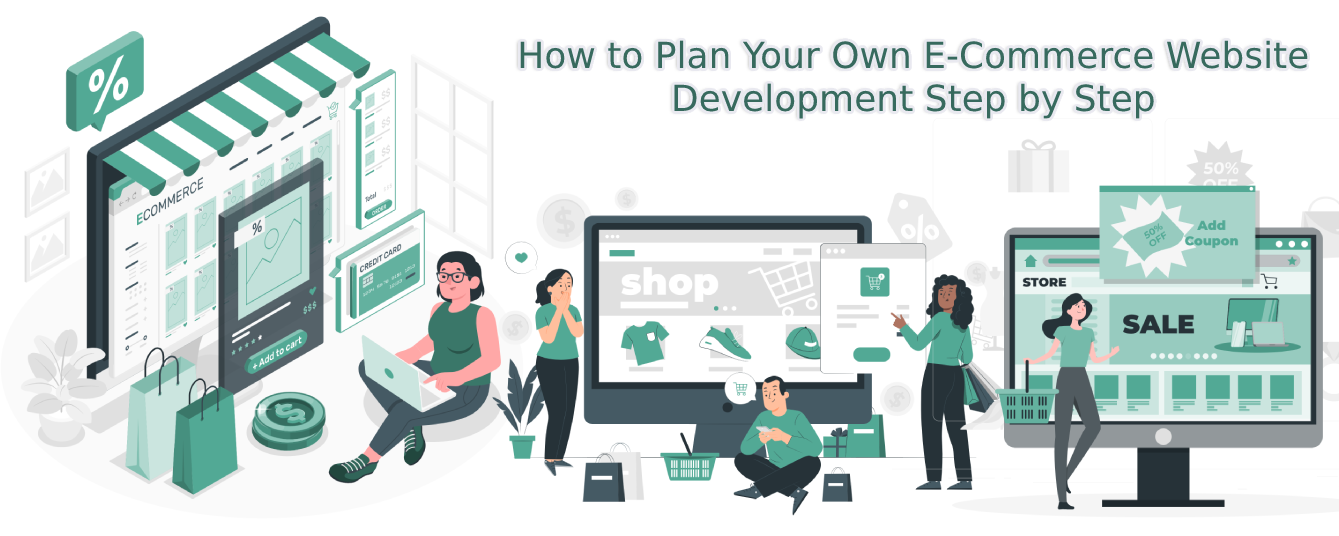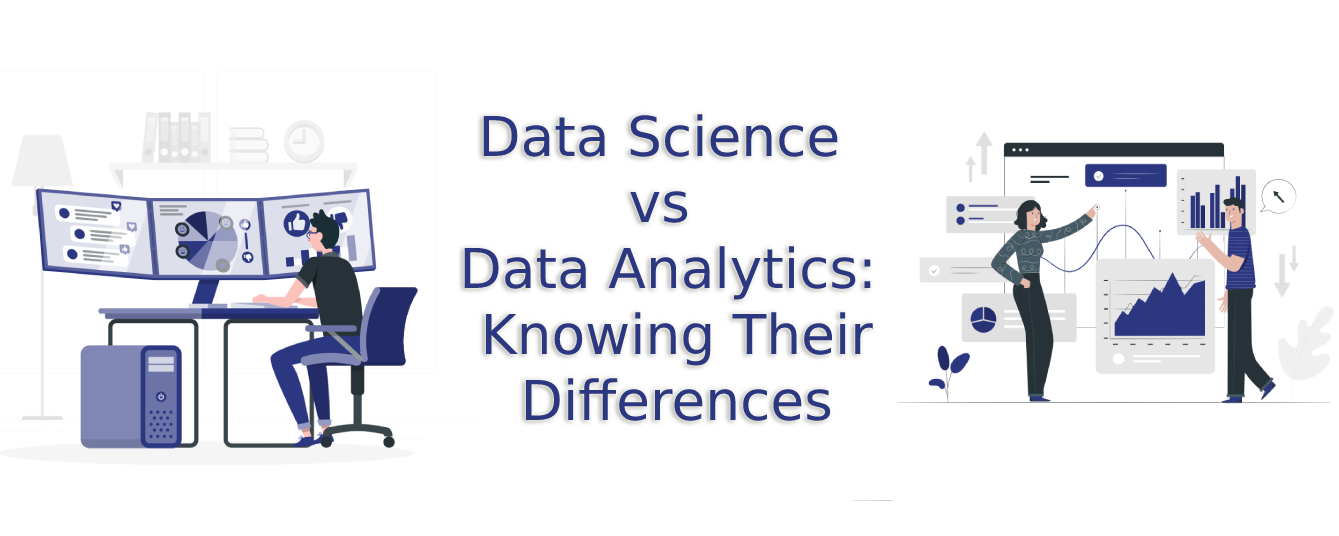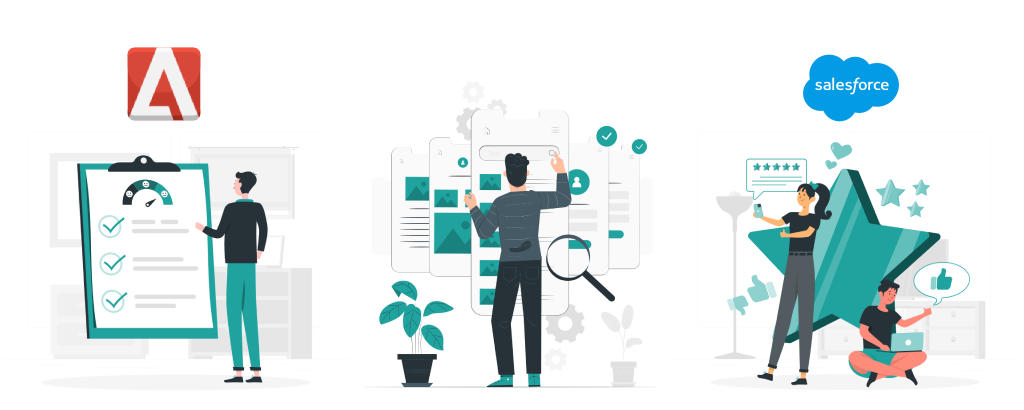Introduction
If you are planning to launch your eCommerce website development project, then it is important for you to know the steps that will make your project go smoothly and successfully. The following points can help you get started with planning.
Complete Market Research:
Market research is an important step in planning for an eCommerce website. It involves gathering information about your target audience, and the products you will sell on your site. You should also consider how you will price these products, what kind of payment options you’ll offer, etc. This information is used to determine whether or not it makes sense for you to build an eCommerce website from scratch or whether there’s another option that could be better suited to meet your needs.
To do market research effectively:
- Gather demographic data (such as age groups and gender) by asking people questions like “What age group do we want?” or “How many men/women are interested in this product?”
- Research competitors’ websites if possible; look at their content and design elements; study how well-optimized each page is for search engines such as Google AdWords so that visitors can easily find what they’re looking for when browsing through similar products/services offered by others businesses within a given industry category.* Look at what kinds of customers visit websites like yours regularly – who are they? How often do they visit over time periods ranging from days/weeks/months etc.? How long did it take them before they finally decided upon purchasing something after reading reviews online and prior keywords?
Study Your Competitors To Find Out What Works And What Doesn’t Work:
Before you can get started with your eCommerce website, you need to study the competition. Learn from them what works and what doesn’t work. Know what customers like about their competitor’s websites and don’t like their own websites.
Also, make sure that you know what customers want in an eCommerce website:
- A good navigation menu with easy access to all products available on a site; will also help customers find exactly what they’re looking for quickly when browsing through categories or subcategories on a page.
- A search box so customers can find specific items easily without having to scroll through thousands of results; this is especially important if there are lots of different variations of the same product (like shoes).
Know Your Audience And Find Out How They Like To Shop Online:
Before you build a website, you need to know your audience. Know what they like and don’t like, what they are looking for and not looking for. Then as eCommerce developers, we can make sure that we are providing them with the best possible experience on our site.
Let’s say that we want to create an online store selling clothes from Zara and H&M. We know that most people who shop online would be interested in buying these brands because they offer affordable prices but also stylish designs. Our clients will also expect their products to be delivered within 24 hours of purchase so it’s important for us as developers not only to build out these features but also test them out before launching our product into the production phase (the phase where everything goes live).
Choose Your Domain Name Carefully, As This Is The Face Of Your Brand:
- Choose a domain name that is easy to remember.
- Choose a domain name that is easy to spell and pronounce.
- Choose a domain name that is easy to brand and market your business with.
Know The Functionalities That You Want Or Need In Your eCommerce Website:
It is important to know what you want or need in your eCommerce website. This can be a challenge because there are so many things to consider when planning for an online store, such as:
- What type of products will be sold?
- How do customers find us?
- What kind of payment methods do we offer, and how much does it cost per month?
Create The Product Pages To Sell More Products:
- Product Description – The product description is the first thing that a customer sees when they visit your website. It should be clear, concise, and contain all the information needed by customers to make an informed decision.
- Product Image – The product image helps shoppers visualize what they are buying before they buy it. It should be large enough to see clearly with their eyes and not too small that it doesn’t do its job properly (i.e., no blurry images).
- Features & Specifications – These two sections can be used together or separately depending on how much detail you want in each one; however, most people find having both sections works best as it gives them more options when deciding whether or not they want something else from another seller instead of just browsing through unrelated items until finding one which fits their needs perfectly well!
Integrating Payment Methods Is An Important Step In Building An eCommerce Website:
The integration of payment methods is an important step in building an eCommerce website. Payment methods are the backbone of an eCommerce website and they can be used to make money from your online store. There are many different ways you can integrate payment methods with your site, but the most common way is through Stripe or PayPal, which we’ll talk about further down in this article.
There are several reasons why integrating payments into your website is so important:
- Customers will feel safer buying from sites that offer them secure payment options (like PayPal). This makes them more likely to shop at your store again in the future!
Implement A Shipping Strategy And Develop An Order Management System:
After you’ve chosen a hosting provider and domain, it’s time to plan your shipping strategy. Shipping is an important part of any eCommerce business; if you don’t have a good strategy in place, customers will probably leave without buying anything.
To develop an effective strategy for shipping, consider these questions:
- How do customers pay? Do they pay with a credit card or PayPal? Do they prefer to use different payment methods or none at all? Is there an option for cash on delivery (COD)? If so, how often does COD occur?
- What kind of packaging do customers like best – bubble wrap envelopes with no padding or boxes with extra protection around their items before they’re shipped out? How many days after purchase do people expect delivery by—and what is the average time frame within which orders are processed/shipped/delivered from us as compared with other shops on this site that offer similar products and services?
Invest In Search Engine Optimization (SEO) To Rank Higher On Search Engines:
Search engine optimization (SEO) is the process of improving the visibility of a website in search engine results pages (SERPs) by increasing the quality of the content and the quantity and quality of inbound links. It is done by taking advantage of various specific features provided by search engines such as Google, Bing, Yahoo! etc.
In order to rank higher on SERPs, you need to do your due diligence before starting any business or website development project. You should always remember that if you don’t have an understanding of how SEO works then it will be difficult for you to rank high on Google’s SERPs without creating any kind of confusion among users who visit your site regularly.
Test The eCommerce Website Before Launching It, As You Don’t Want Anything To Go Wrong After It Goes Live!
The best way to ensure that your eCommerce website is ready for launch is by testing it on different devices and browsers, as well as operating systems and connection speeds. Test the following:
- Different devices (desktop, laptop, tablet).
- Different browsers (Chrome, Firefox, and Microsoft Edge).
- Operating systems (Windows 10 / MacOS 10.6+).
When you have tested this thoroughly then you can launch your store with confidence that everything will work properly!
The above-mentioned steps will make your eCommerce website development project go smoothly so that you can launch your website successfully and start selling online right away.
The above-mentioned steps will make your eCommerce website development project go smoothly so that you can launch your website successfully and start selling online right away.
Before starting a new project, it is important to plan what needs to be done first. You should not rush into things because this may lead to failure in the end. It’s better if you take time and do everything step by step instead of trying to do everything at once or rushing through the process because then there is the risk of losing important information about your company, business model or products, etc., which could result in creating a bad impression on customers online as well as offline due to missed deadlines and lack of communication with stakeholders involved (e.g., suppliers).
It’s also important not only to think about how customers will interact with your product but also to think about how they might interact with each other – after all these days many companies have realized that social media platforms such as Twitter are perfect places whereby people share information related directly back towards companies themselves so if we want our brand name etched firmly into memory then we need something unique like ours!
Conclusion:
Now, you have all the information about how to plan and build your own eCommerce website. We hope that this article has been helpful to you, and we wish you success in building your own eCommerce website.
Are you interested in engaging with us and growing your business to the next level? Contact us now!



